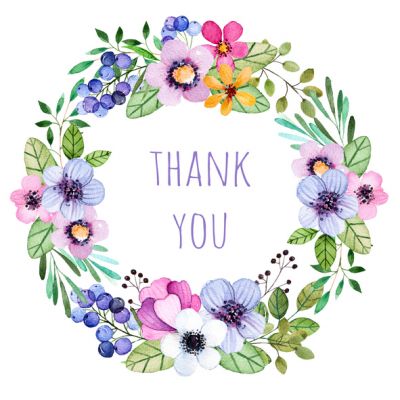 Once you and your sweetie have said, “I do,” cut the cake and jetted off to your honeymoon destination, you’ve probably got several major tasks on your to-do list when you return: unpacking from your trip, unwrapping gifts, moving through a mound of paperwork and perhaps unboxing and setting up in a new home. Among the hustle and bustle of post-wedding duties, there’s one significant undertaking you won’t want to forget: sending out thank-you notes to attendees and gift-givers. If you’re dreading the prospect, that’s understandable. It pays to observe a few best practices to express your sentiments while staying etiquette-smart.
Once you and your sweetie have said, “I do,” cut the cake and jetted off to your honeymoon destination, you’ve probably got several major tasks on your to-do list when you return: unpacking from your trip, unwrapping gifts, moving through a mound of paperwork and perhaps unboxing and setting up in a new home. Among the hustle and bustle of post-wedding duties, there’s one significant undertaking you won’t want to forget: sending out thank-you notes to attendees and gift-givers. If you’re dreading the prospect, that’s understandable. It pays to observe a few best practices to express your sentiments while staying etiquette-smart.
No, You Can’t Take a Year to Send Your Notes
It’s unclear from where newlywed couples derived the belief that it’s permissible to take up to a year to send thank you notes. However, Huffington Post’s gang of wedding features editors cleared up that misconception in a 2015 article. When they asked Anna Post from the Emily Post Institute for etiquette expertise, she explained that it’s best to have your notes written and sent within three months of returning from your honeymoon.
Who Should Receive a Thank You?
Meanwhile, the Emily Post Institute offers etiquette guidelines on its own website for your wedding thank you notes. Their write-up includes a list of individuals to whom you should send a card:
- Anyone who presented you with a gift
- Wedding party members
- Shower or party hosts
- People who housed or entertained your guests
- Your officiant, wedding planner and other vendors
- Your parents, or whoever else hosted the nuptials
- Individuals who helped in other ways
Advice for Wordsmithing Your Notes
A thank you note should express your gratitude, but you may discover that finding the right words can be a challenge. Thankfully, you don’t have to go it alone. A Practical Wedding contributor Stephanie Kaloi suggests starting off by thanking each attendee for joining you in your joyful celebration. Don’t forget to include specific details about each person’s gift in your wording, but you may avoid this practice for guests who gave you money. For guests who didn’t gift you, be sure to convey your gratitude for their presence. Besides these recommendations, Kaloi includes examples to help inspire your writing.
If you’re tempted to use form letters, emails or pre-printed cards with stock messages, take the Emily Post Institute’s advice: don’t. A personally handwritten note is the method de rigueur, according to these experts. Those with major concerns about legibility or who have a disability that makes handwriting difficult can safely type their notes. However, you should craft custom wording for each individual card.
A Few Wise Words About Stationery
Fortunately, note writing can also serve as an opportunity to select unique stationery for the task. TheKnot writer Lauren Kay suggests simple white or off-white cards, or you can choose the same design or one similar to your wedding invitation and program paper styles. The use of monogrammed stationery can get tricky, as it's typically considered bad form to utilize the version for your married name until after you’ve tied the knot. Finally, don’t delay until your wedding photos come in, but you can opt for a great-looking engagement pic if you decided to go with personalized photo cards.
You might feel intimidated or overwhelmed by the prospect of writing batches of thank you notes. Nevertheless, you can make the task easier by turning to etiquette guidelines and example wording to provide you with hints for composing your messages. Choosing a distinctive card style can inject some fun into your notes, but make sure you gather your materials in advance and set aside plenty of time to write and send your sentiments. By following these tips, you can take charge of this daunting task.
Add Your Comment